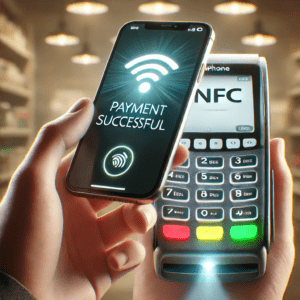Will Managed PayFac opportunities benefit from NFC transactions?
 We are in a period of quick technological change, and payment methods seem to be changing quicker than ever. One necessary change that is on the horizon is the decline of chip credit cards, which are being replaced by newer, more efficient payment solutions. Magnetic Stripe and chip cards are being phased-out. Currently 90% of cards are NFC capable. 2027 marks the end of issuing magnetic stripe and EMV cards, and it can’t come fast enough. Europe is implementing this change much faster.
We are in a period of quick technological change, and payment methods seem to be changing quicker than ever. One necessary change that is on the horizon is the decline of chip credit cards, which are being replaced by newer, more efficient payment solutions. Magnetic Stripe and chip cards are being phased-out. Currently 90% of cards are NFC capable. 2027 marks the end of issuing magnetic stripe and EMV cards, and it can’t come fast enough. Europe is implementing this change much faster.
For merchants who serve customers face-to-face, these advancements in payment technologies promise to deliver some useful benefits: lower costs, quicker transactions, and greater customer satisfaction. While many Managed Payfac opportunities live in the card not present realm, there are also some in the card present realm. Let’s discuss how those of the card present variety might benefit.
Reduced Costs
One of the main advantages for merchants is the possible decrease in costs relating to chip credit card transactions. Typical readers used these days require regular upkeep and updates to ensure they stay compliant with the payment security standards. Also, the hardware is often very expensive to maintain, update, or replace. As payment methods reach toward mobile wallets, tap-to-pay systems, and other contactless methods, merchants can invest in more streamlined and versatile point-of-sale (POS) systems. These systems often support multiple payment methods, which reduces the need for several devices and simplifies overall operations.
Furthermore, merchants face a big problem in dealing with fraudulent transactions. If they don’t upgrade their systems with the newest security measures, they are liable for any fraud that occurs with chip cards. A contactless payment system, however, comes with numerous security features. They are built into the system and reduce the risk of fraud to such an extent that, if fraud does happen, you’re much less likely to be held liable for it.
Faster Transactions
Though they are more secure than magnetic stripe payments, chip card transactions are annoyingly slow. For businesses with a high turnover of customers, like coffee shops and fast-food restaurants, the several seconds it takes to insert a card, wait for it to be read, and then remove it can add up to a noticeable loss in time and, potentially, a loss in sales.
Methods of payment that do not require physical contact, which include tap-to-pay cards and mobile wallets, provide a vastly speedier alternative. With these methods, a customer can just tap their card or phone against the terminal to complete the transaction, and they do so in a fraction of the time it would take to pay with cash or even a swipe or dip card. For merchants, this means shorter lines and quicker service—a better business model.
Improved Customer Satisfaction
Consumers today want their merchant experiences to be convenient and fast. The drop in usage of chip credit cards aligns with the consumer trend of wanting to pay in ways that are just as convenient and just as fast. Contactless payments, mobile wallets with a tethered-up smartphone, and other alternatives to chip cards give the modern shopper a simple way to pay that largely sidesteps the “user experience” problem of the chip card.
Furthermore, several contemporary payment systems work closely with digital loyalty programs and e-receipts to offer an even more personalized shopping experience than was previously possible. For instance, when a customer pays with a mobile wallet, they’re just as likely to be awarded points for that purchase as when they use a loyalty card. And when it comes to conveniently earning points, the mobile wallet is essentially on par with the standard debit and credit card.
Embracing the Future of Payments
The evolution of payment technology takes a significant step forward with chip credit cards going the way of the dodo. For brick-and-mortar merchants, this change is an opportunity to not only become more efficient but also to align more closely with what consumers want these days, which is modern, digital solutions. Investing in new payment technologies means paying less (much less, in some cases), getting to the next customer more quickly, and delivering a better shopping experience overall.
Platforms who enhance their offering by integrating to a managed payment facilitation solution can lower the expense of hardware and provide “terminals” to every employee by way of their smart phone device, and each and every transaction can be mapped to the given employee who accepts a transaction. For example, a restaurant platform who integrates to a managed PayFac solution can have the ability for each and every server to have their own payment acceptance capability simply by downloading the managed PayFac’s app to their smart phone. Hardware expense; zero.



